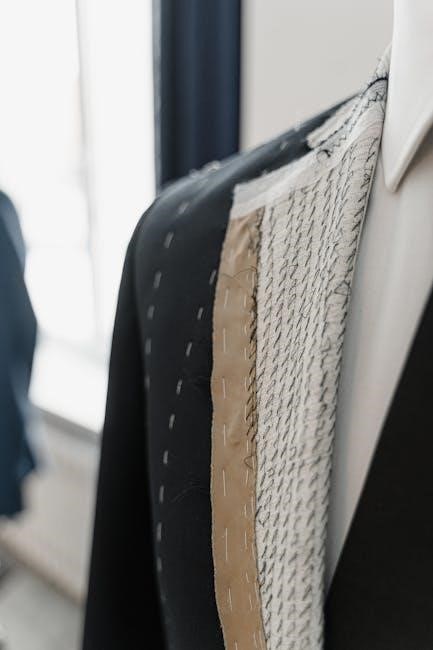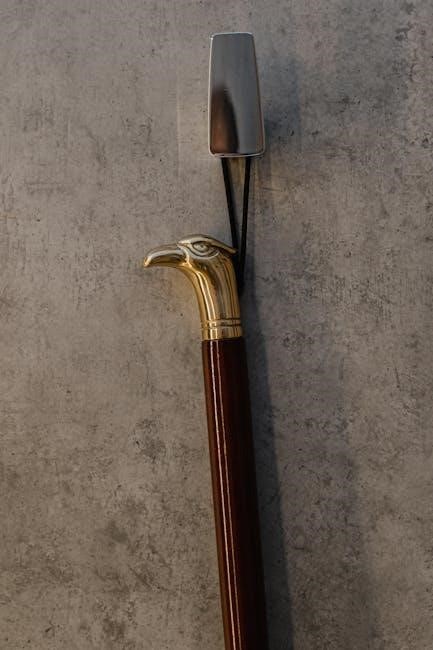Welcome to our shirt measure guide. Learn how to take accurate measurements for a perfect fit. Essential steps for neck‚ chest‚ sleeve‚ and waist measurements.

Importance of Accurate Measurements
Accurate measurements are crucial for ensuring a shirt fits perfectly‚ enhancing both comfort and style. A well-fitted shirt boosts confidence and creates a polished appearance. Proper measurements prevent issues like tightness or excessive fabric‚ which can ruin the look and feel of the garment. Incorrect sizing can lead to discomfort and a less professional vibe. By taking precise measurements‚ you ensure the shirt drapes naturally‚ allowing freedom of movement. This attention to detail also helps in maintaining the shirt’s functionality‚ whether for formal or casual wear. Investing time in accurate measurements guarantees a flattering fit‚ making it a worthwhile effort for any wardrobe essential.
Basic Measurements Required

Four key measurements are essential for determining your shirt size: neck‚ chest‚ sleeve length‚ and waist. The neck measurement is taken around the base of the neck‚ ensuring comfort and fit. Chest measurement is taken across the fullest part‚ ensuring the shirt isn’t too tight or loose. Sleeve length is measured from the shoulder to the wrist‚ ensuring proper coverage. Waist measurement is taken at the narrowest point‚ providing a tailored fit. These measurements are vital for comparing to size charts and ensuring a shirt that fits perfectly. Accurate measurements ensure comfort‚ style‚ and functionality‚ making them the foundation of a well-fitted shirt.

Understanding Shirt Measurements
Mastering shirt measurements ensures a tailored fit. Key measurements include neck‚ chest‚ sleeve‚ and waist‚ each crucial for comfort and style. Learn how to measure accurately for the perfect shirt.
Neck Measurement
The neck measurement is a critical starting point for determining shirt size. To measure accurately‚ place the tape measure around the fullest part of your neck‚ ensuring it’s level and not too tight. Your index finger should fit comfortably under the tape for a natural fit. Add half an inch to this measurement for comfort. This ensures the collar won’t be too restrictive. For example‚ if your neck measures 15 inches‚ add 0.5 inches‚ resulting in a 15.5-inch collar size. This step is essential for a shirt that feels tailored to your body‚ providing both style and comfort.
Chest Measurement
The chest measurement is key to ensuring a well-fitted shirt. To measure accurately‚ place the tape measure around the fullest part of your chest‚ keeping it level and parallel to the floor. The tape should not be too tight or too loose‚ allowing for a natural fit. If measuring an existing shirt‚ lay it flat and measure across the chest from one seam to the other‚ then double the measurement for your full chest size. This step is crucial for determining the right fit‚ whether you prefer a slim‚ regular‚ or relaxed style. Accurate chest measurements ensure comfort and a polished appearance‚ making it a vital part of the shirt measure guide.
Sleeve Length Measurement
Measuring sleeve length ensures your shirt fits perfectly. Start by placing your arm slightly bent at your side. Measure from the top of your shoulder‚ just below the base of the neck‚ to your wrist bone. For an existing shirt‚ lay it flat and measure from the shoulder seam to the cuff edge. This ensures the sleeves are neither too short nor too long. Accurate sleeve length contributes to a polished look‚ making it an essential part of the shirt measure guide. Proper fit enhances both comfort and style‚ ensuring you look your best in every shirt you wear.

Waist Measurement
Waist measurement is crucial for a tailored fit‚ especially for dress shirts. To measure accurately‚ wrap the tape around the narrowest part of your natural waistline‚ typically just above the hipbone. Ensure the tape is level and not too tight or loose. For an existing shirt‚ lay it flat and measure across the waist from one side seam to the other. This measurement helps determine the shirt’s mid-section fit and comfort. A well-fitted waist enhances the overall appearance‚ ensuring the shirt drapes smoothly without being too loose or restrictive. This step is vital for achieving a balanced and stylish look in your shirt.

How to Measure an Existing Shirt
Measure your best-fitting shirt to determine your size. Lay it flat‚ smooth wrinkles‚ and take accurate measurements of collar‚ chest‚ waist‚ and sleeves. Compare with size charts for a perfect fit.
Step-by-Step Guide
To measure an existing shirt‚ start by laying it flat on a smooth surface. Ensure all buttons are fastened and the fabric is wrinkle-free for accurate results. Begin with the collar measurement: place the tape measure around the inner edge of the collar‚ ensuring it’s level and not twisted. Next‚ measure the chest width by placing the tape measure 2.5 cm below the armpits and stretching it across the shirt. For sleeve length‚ measure from the center back of the collar to the cuff edge. Finally‚ measure the waist by placing the tape measure at the narrowest point of the shirt. Compare these measurements with the brand’s size chart to find your perfect fit. This method ensures consistency and accuracy when determining your shirt size.
Comparing to Size Charts
Once you’ve measured an existing shirt‚ compare the results to the brand’s size chart to determine your ideal fit. Start by aligning the chest‚ sleeve length‚ and waist measurements with the chart. Pay attention to any differences in fit styles‚ such as slim-fit‚ regular‚ or relaxed‚ as these can affect sizing. If your measurements fall between sizes‚ consider your preference for a tighter or looser fit. Some brands also offer a “ease” measurement‚ which accounts for comfort and movement. Double-check your measurements to ensure accuracy and match them to the closest size on the chart. This step ensures a precise fit when ordering shirts online or in-store.

Understanding Sizing Systems
Shirt sizing systems vary by brand and region‚ with differences in fit styles and measurements. Always refer to the specific brand’s size chart for accurate sizing.
Differences in Fit Styles
Shirt fit styles range from slim-fit to relaxed‚ each catering to different body types and preferences. Slim-fit shirts are tailored closely to the body‚ offering a contemporary look. Classic or regular fit provides a balanced silhouette‚ suitable for most occasions. Relaxed fit offers more room‚ ideal for comfort. Athletic fit is designed for broader shoulders and chests‚ while tapered fit narrows at the waist. Understanding these styles helps in selecting the perfect shirt based on personal comfort‚ body type‚ and intended use. Always consider the fit style when comparing measurements to size charts for an optimal fit.
Brand-Specific Size Charts
Brand-specific size charts vary‚ as different brands may have unique sizing standards. Always refer to the chart provided by the brand you’re shopping from‚ as their measurements may differ from others. For example‚ one brand’s medium might be another’s large. To ensure accuracy‚ compare your measurements directly to the brand’s chart. Some brands offer additional fit options‚ such as slim or relaxed‚ which can further customize your fit. Checking the brand’s specific guidelines helps in avoiding size mismatches and ensures a more tailored look. This step is crucial for online shopping‚ where trying clothes beforehand isn’t possible. Always prioritize using the brand’s own sizing guide for the best results.

Ensuring the Perfect Fit
A well-fitted shirt enhances comfort and appearance. Accurate measurements and comparing sizes ensure a polished look and optimal comfort‚ making every shirt feel tailored for you.
Additional Tips for Accuracy
For precise measurements‚ use a flexible tape measure and stand up straight. Ensure the tape is level and not too tight or loose. Measure twice to confirm accuracy. Consider the fabric type‚ as stretchy materials may require different sizing. If unsure‚ refer to brand-specific charts‚ as sizes can vary. Taking measurements in the morning ensures consistency‚ as body dimensions can change slightly throughout the day. For the best fit‚ compare your measurements to the size chart provided by the brand you’re shopping from. This ensures a tailored look and maximum comfort‚ making your shirt feel perfectly suited to your body.

Final Checklist
Double-check all measurements for consistency and accuracy. Ensure the tape measure is level and not twisted. Compare your measurements to the brand’s size chart carefully. Consider the fit style—slim‚ regular‚ or relaxed. Account for fabric stretch or shrinkage if necessary. Verify sleeve length both bent and straight to ensure comfort. Take note of any special features‚ like adjustable cuffs‚ that may affect fit. Finally‚ refer to customer reviews or size guides for additional insights. This comprehensive approach guarantees a well-fitting shirt that meets your expectations and enhances your wardrobe with comfort and style.
